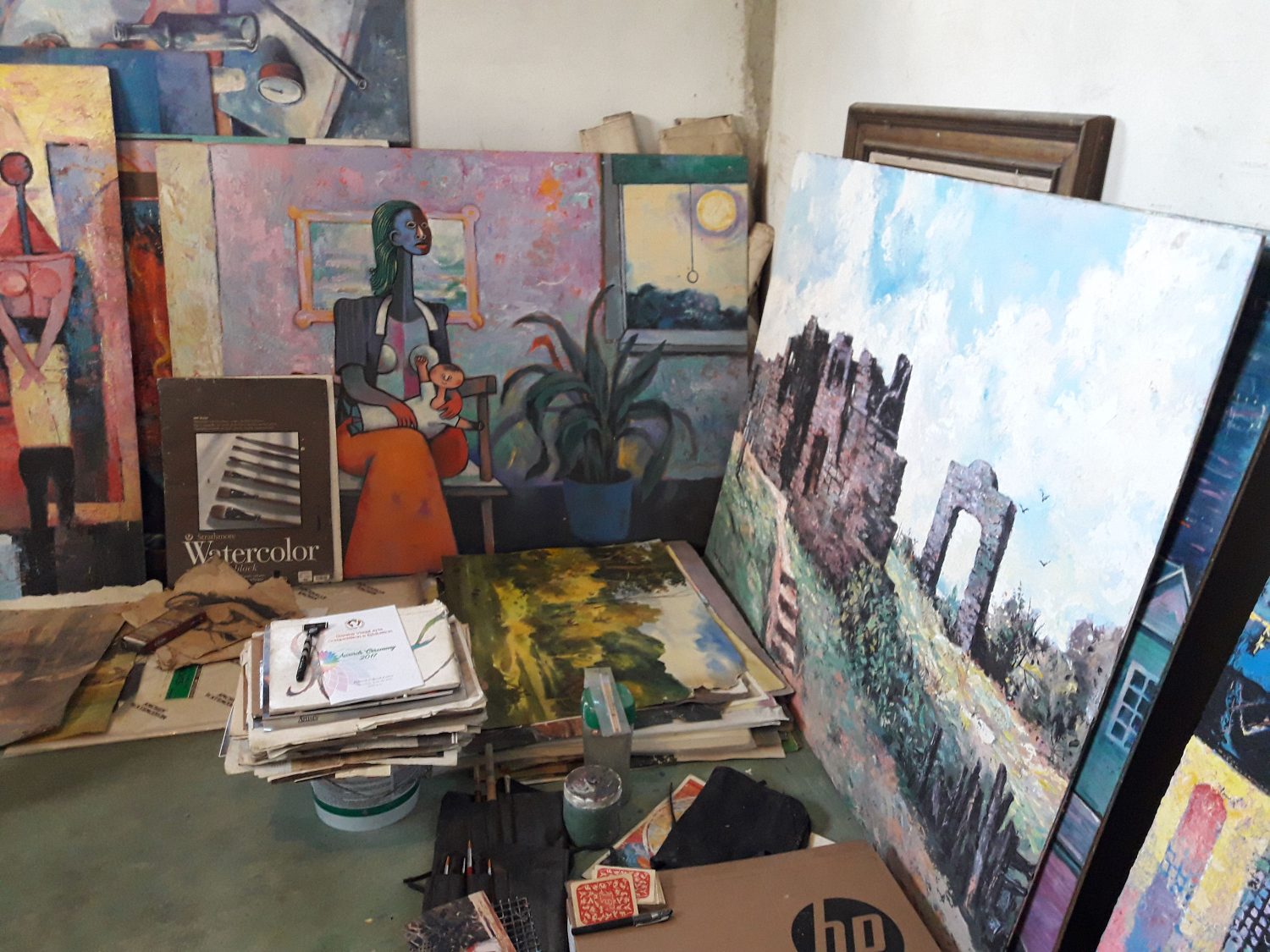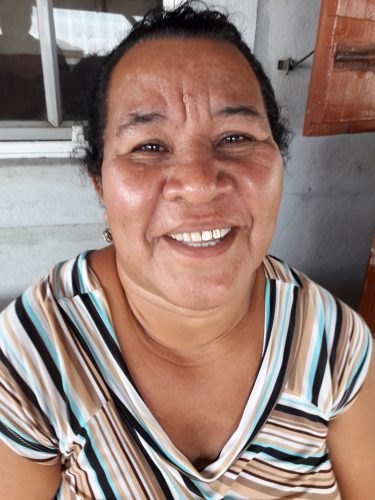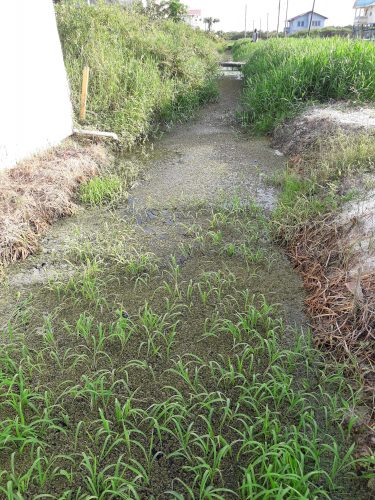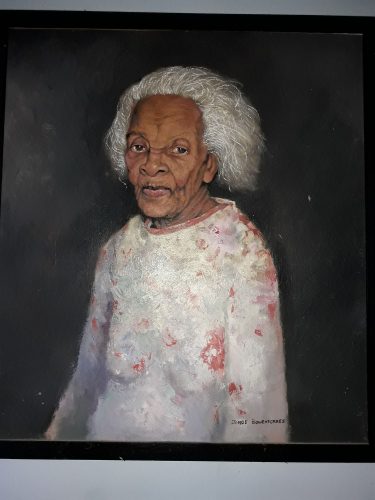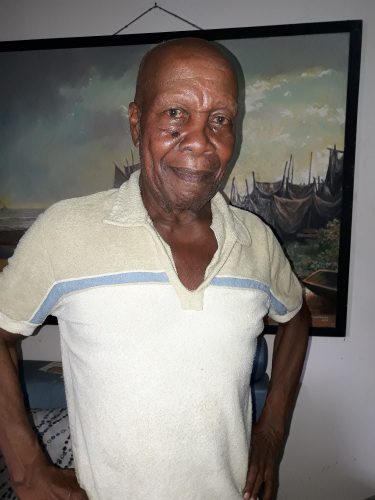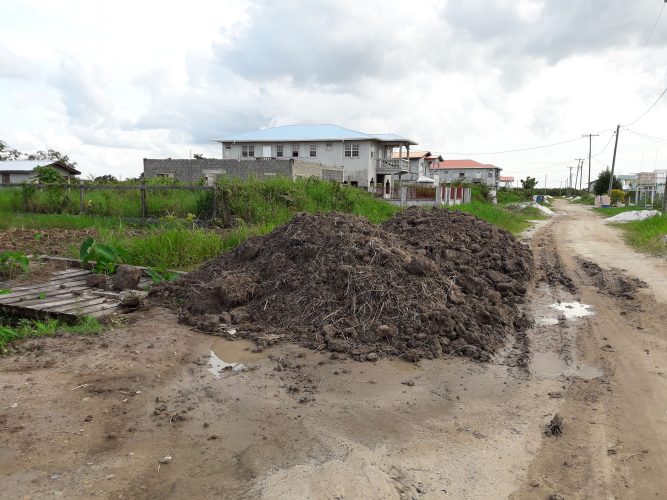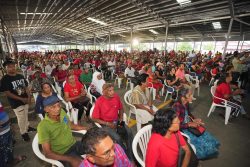Schoonord on the West Bank Demerara is bordered by the overpopulated Goed Fortuin and uninhabited Meer Zorgen. It sits just off the Demerara Harbour Bridge and is home to more than 1,000 residents, a population that is climbing daily.
Behind a sign on the main road that says Schoonord, the only living arrangements are a privately-owned housing estate. But when asked, random strangers consider the area that is actually Schoonord to be Parfaite Harmonie.
This village can be accessed from two routes: the Dairy Car Park outside the GuyOil Gas Station at the Vreed-en-Hoop junction or the Bagotville/Number One Canal junction. The Vreed-en-Hoop route, which I used, is relatively new; it has only been three years since persons have been able to access the village through the new road.
On arrival, the driver asked if I was going left or right and not being sure I came off at the junction. As it turned out, left is Phase One of Schoonord and right, Phase Two. Though a relatively large village, there are many vacant lots, most of which are the bushy habitats of reptiles and other stray animals.
Turning left, I stopped to talk with Doreen Bennett, originally of Mabaruma in Region One. Bennett approached the gate with her flour-covered hands to let me in saying she had just finished kneading dough to make dal puri for her mother who would be dropping by later in the day.
Bennett left the interior 18 years ago with her daughter to reunite with her husband who had left the year before in search of work. However, she has only been living in Schoonord for three years. Her husband who is into construction has found that plying his trade is easier on the coastland.
The woman added that when she arrived, residents already had access to potable water and electricity. At that time, the road was just under construction so she was using the old route to get back and forth. Before moving in, they had thought their house lot was too far at the back of the village and there was nothing convenient about it. They knew before that a road was going to be built but had no idea it would be right outside of where they live. When they realized it was, they could not believe their good fortune as they previously had to walk half a mile before they were able to get a vehicle out of the village.
Bennett has found that unlike Mabaruma, the people of Schoonord are reserved and most of them work on a daily basis.
She added that only recently she was telling her sister who was visiting from St Maarten due to Hurricane Irma, that living on the coast is cheaper. Back in the North West District, she noted, groceries, meat, fish and greens are costly. “In Mabaruma if you don’t plant, greens too expensive and I don’t like planting a garden. Here, even though you might not have a lot of money, you could still manage to have a balance diet,” she said. She visits the market at Vreed-en-Hoop three times a week for greens and purchases groceries from one of the three supermarkets between Schoonord and Vreed-en-Hoop. A fish seller passes by often, so she does not have to go looking.
The interview was interrupted by a fisherman calling from outside her fence. The man asked whether she had seen anybody move his bicycle as he had hidden it and had gone fishing along the canals nearby. Bennett indicated that she had not as she had been out earlier and been busy when she got back. The man lamented about robberies in the area before moving on.
Asked if she has ever been a victim of any robbery, she said no stating that she has always known the area to be peaceful. She added that she likes the quiet atmosphere here and usually the only noise around is when she plays Gospel music before she and her family go to church on Sunday, when her husband listens to his oldies on Saturday nights or if her neighbour nearby puts on his music. They attend the Healing Word Ministry Church in the village.
One disadvantage of living here though is frequent blackouts in the area sometimes up to four times in the day. She has had her television damaged twice and has had to run to the computer technician with her computer four times already.
Continuing on I noticed that most of the houses were bordered by high fences and on the inside of some these fences, pitbulls roamed. Most of the houses were locked up tight. A little way along, I was warmly greeted by an elderly resident filling his bucket with sand. He turned out to be international artist and poet, Jorge Bowen-Forbes.
Bowen-Forbes took me back to his home through an unfenced yard, filled with fruit trees in the backyard.
When we were seated, he related that he was born in the United States to Guyanese parents and brought back to Guyana by his mother when he was just 16 days old; he was here until he became a teenager, before returning to the US.
As a toddler, he decorated the walls with his pencils to his mother’s dissatisfaction and as quickly as she cleaned the walls he found himself another part to doodle on. This led her to buying him his first painting set at the age of five. He wasted no time and painted every chance he got. Bowen-Forbes attended Comenius Moravian School, the same school President David Granger attended in his boyhood days as well, the two only learned of this at an award ceremony a few months ago. Bowen-Forbes was presented the Guyana Visual Art Competition’s Lifetime Achievement Award by the President in July.
Bowen-Forbes’s life as a professional artist began earlier than expected, at age twelve to be specific and according to the man, he began helping a sign artist, Sam Cummings, paint signboards around Georgetown. Cummings, who always anticipated a drink with the boys would outline the letters then leave it up to Bowen-Forbes to fill in, which he did with pride.
He even recalled the time he met the legendary E R Burrowes. He was still a teenager at the time and was busy painting a new scenery with his watercolours. Burrowes had dropped by to visit a former teacher of Comenius Moravian and his neighbour, when he noticed the boy painting and called him over. Impressed with Bowen-Forbes’s work, he requested that he join the Working People’s Art Class. Some years later, Bowen-Forbes left for the States where he lived and raised a family.
Fast forward to decades later, Bowen-Forbes at 80 years old, is nicely settled in Schoonard to enjoy his retirement. To date, he is the artist with the most paintings at the Castellani House where it is said 1,300 paintings by Guyanese hang from the walls. He has 650 in his house, a few which depict long ago scenery of Sophia and one special one of his mother, Margaret Violet Walker, who died earlier this year at the age of 105.
Bowen-Forbes was the third person to take up residence here in 2011. He moved to Schoonord at a time when the bushes were too dense to see the other side and when it seemed that snakes ruled the village. In the six years he has been here, he has killed three of them already and ensures that there is a glass pulled in front of his doorway just in case he steps out into his garden leaving the door open. During the days when Schoonord and nearby villages seemed a jungle, he said there were sightings of “big cats” (jaguars) around. Because of this, persons were encouraged to keep their lots cleaned even if they weren’t residing on them. It was scary then, he noted.
His house lot is situated high up and so he is not affected by flooding but many of his neighbours and other residents are. During the time this reporter visited, the potholed roads were flooded and one resident who claimed to have moved in the previous night was busy digging drains that led away from the holes to allow for the water to run out. However, because of the flooding and the deplorable conditions of the roads, persons heading to work would walk out and leave their long boots at Bowen-Forbes’, returning later in the evening to retrieve them.
What makes the flooding worse is the poor cleaning of the drains by the Neighbourhood Democratic Council. Bowen-Forbes pointed out that the grass piled up in front of his residence and along the roadways did not grow to that length but was cleaned two months ago by an excavator.
The drains already filling up with grass sprouting up in places proved his point of them not properly cleaning the drains and instead just taking the weeds out.
As much as he likes the quiet atmosphere he does not like the idea of there being no streetlights with strangers prowling the area. “Only last night about three in the morning I woke up to voices outside of my house. When I looked out I couldn’t see much and it was only because one, one vehicles was passing by that I made out that they were a few guys and two women. A few years ago, when the new road was under construction, they had brought a container and left it at the junction. When I found out about it, they said it was there for the purpose of a Police Outpost but they eventually moved it,” he said.
Recently, he had a problem with Guyana Power and Light (GPL), where he was charged a lot more when he went to top up his prepaid meter a second time in the month. He later learnt from a programme aired on the television that if a prepaid customer began paying for a certain amount of electricity and realized they need more and so is forced to buy a second time that month, they are charged more which was called tariff recovery. Bowen-Forbes added that this makes no sense because if he chooses to buy a second time, that means another sale for GPL and therefore he shouldn’t be charged extra. On top of this, Schoonard is greeted with blackouts almost every day.
For now, Bowen-Forbes wishes for proper roads, less blackouts and a flowing water supply as water goes off days at a time sometimes, the most recent being two Tuesdays ago; the water didn’t return until Saturday that week, he said.
Life in Schoonord for Bowen-Forbes means painting in his little studio every day and finding himself among the birds in his garden, planting.
